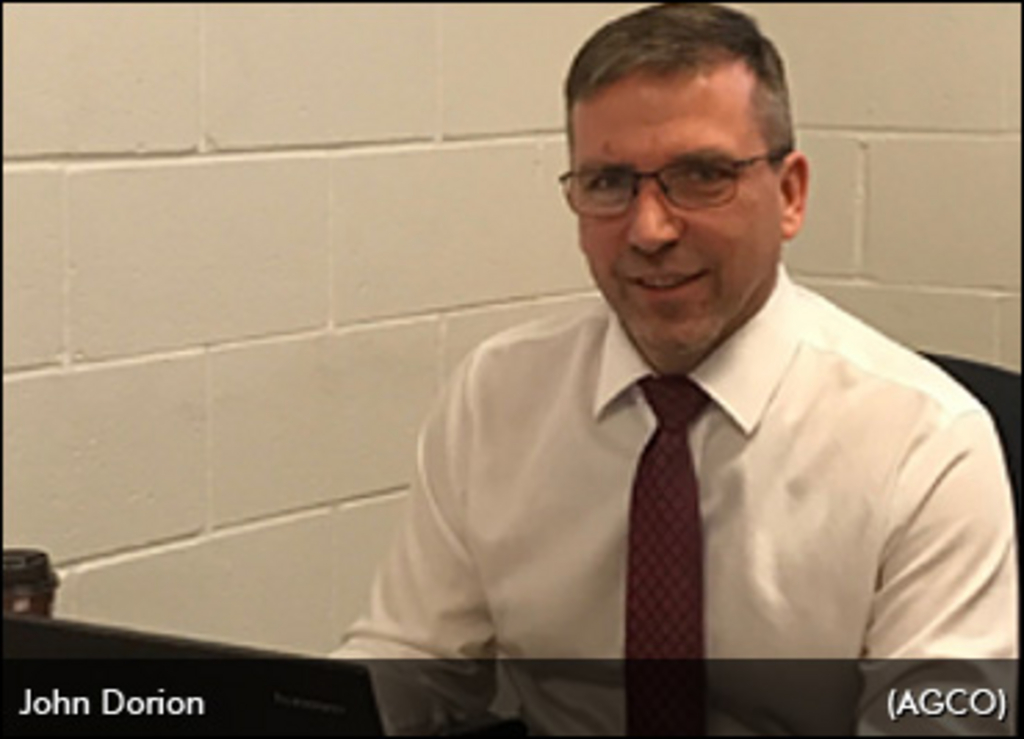Get To Know Official John Dorion

The following feature is part of the Winter 2018 Race Line newsletter published by the AGCO.
Like so many in this industry, John Dorion’s first memories of racing go back to spending time with family at the track. Whether it was hanging out with his dad or uncle at the Barrie Raceway, his love for racing started young and has never wavered.
Armed with a Harness Racing Industry Operations diploma from Seneca College, John started his hands-on work in the industry as a full-time groom at Greenwood. This led to eight years as an assistant trainer, followed by being licensed as both a driver and a trainer.
Fast forward to 2010, when John joined the Ontario Racing Commission (ORC). Starting as a part-time, then full-time Standardbred Judge, he quickly became credentialed as an Associate Race Official, qualified to adjudicate all three breeds. Despite being raised in the Standardbred industry, John’s deep appreciation for the speed and excitement of Thoroughbred and Quarter Horse racing is evident and in 2011 he settled in as a Steward at Fort Erie.
Following the development of the Commission’s accident protocol in 2013, a year later he took on the additional role of Equine Accident Specialist. With an accident defined as “any abnormal contact or fall by a horse or participant at the racetrack, primarily during racing hours”, John is charged with the task of looking into the more serious incidents, generally those resulting in a serious injury or hospitalization of a participant or horse. As on-track Race Officials electronically input occurrences into their Reports, he is notified of an accident in real time so he can open an investigation. Video review, witness statements collected from participants (e.g. veterinarians, paddock judges, starters, security and Race Officials) and a review of the protocols followed (such as response times by EMS or security) are all carefully analyzed until a picture emerges as to the contributing factors of the accident -- be it weather, track condition, driver/jockey error, horse performance, etc. In consultation with experts (e.g. veterinarians, the Ministry of Labour) and supported by his years of practical hands-on experience in the industry, he writes a comprehensive report including recommendations on how to prevent or limit reoccurrence of a similar incident.
One such recommendation was the implementation of racetrack emergency sirens. Where previously there had just been warning lights, tracks now have sirens that sound in the event of an on-track incident, signaling the participants to immediately stop the race. Since their introduction, these sirens have been employed about ten times and there have been no further incidents of secondary on-track accidents.
Asked what has kept him in the industry all these years, he didn’t hesitate. “Passion”, he said. “Passion for the races, the sport, the industry, the competitors. If I had to say only one thing, it would just be my deep appreciation for the horse itself.”
Watching John’s face when he speaks about this industry and seeing how seriously he takes his responsibility to ensure the welfare of our horses and participants, it’s safe to say that everyone involved is in very good hands.
(AGCO)

